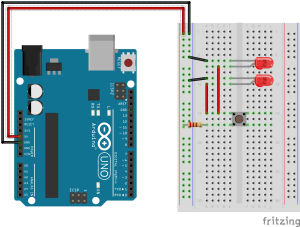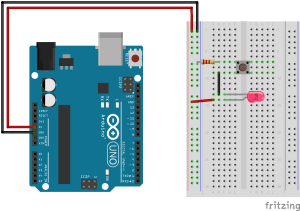Wrangling Electrons - class 1
Computers are great adding machines. They’re also great at comparing things that usually don’t work well together. Jim Campbell hasa nice animation about this. We can get away from the mouse, monitor, keyboard (and now ubiquitous touchscreen) to think differently about these machines we use all the time.
At the end of the day, all we’re doing here is wrangling electrons. They want to move from a place of higher potential energy to a place of lower potential energy (we call this ground). The bus falling off the side of a cliff metaphor is generally a good idea of how we can think of these things moving through a circuit.
We always want our circuits to have some sort of work for the electrons to do. This can be busywork (like a resistor), or actual work (like an LED), or behind the scenes work (operating logic gates). Without something to do, electrons get bored and start fires (aka short circuits). Remember, all voltage gets used up in a circuit, which is why you can’t bring your DVD player to France.
Ohms Law (V=I*R) is useful in theory, but not so much for day to day use. What is more interesting though, is that electricity is like a college student in that it follows the path of least resistance.
For us, right now, it lets us know that we can’t just stick one of our LEDs into a 5V rail without it blowing up.
We can use schematics to identify various components
Breadboards are our canvas. They’re the best. They allow us to change circuits quickly and easily. Underneath the plastic insulation, there are metallic strips that form connections which carry electricity. SeeWhat’s inside a breadboardfor more.
Soldering is going to become your best bet at keeping things in place. Adafruit has an excellent guide to soldering.
While we’re working with DC, there’s also AC. But don’t go there.
Turn the Arduino into an expensive power supply to light up your LED.
This circuit is in series
Each of the following are in parallel

Multimeters are great tools for figuring out what is going on inside a circuit. Adafruit has avery nice tutorial on how to use one.
Now that you have used a switch out of the box,make your own.Here is a great exampleof how you should be thinking about this exercise.


